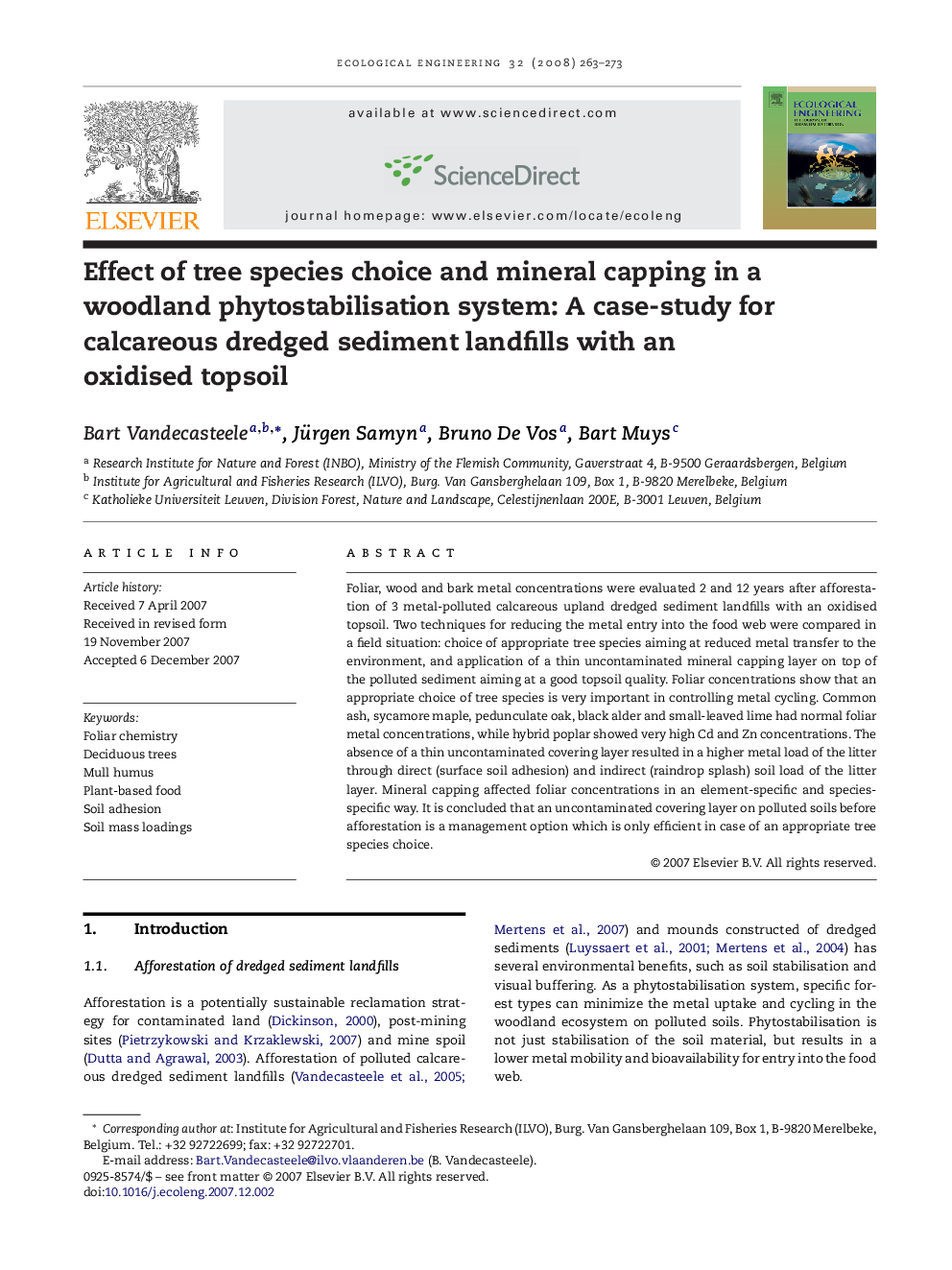| Article ID | Journal | Published Year | Pages | File Type |
|---|---|---|---|---|
| 4391007 | Ecological Engineering | 2008 | 11 Pages |
Foliar, wood and bark metal concentrations were evaluated 2 and 12 years after afforestation of 3 metal-polluted calcareous upland dredged sediment landfills with an oxidised topsoil. Two techniques for reducing the metal entry into the food web were compared in a field situation: choice of appropriate tree species aiming at reduced metal transfer to the environment, and application of a thin uncontaminated mineral capping layer on top of the polluted sediment aiming at a good topsoil quality. Foliar concentrations show that an appropriate choice of tree species is very important in controlling metal cycling. Common ash, sycamore maple, pedunculate oak, black alder and small-leaved lime had normal foliar metal concentrations, while hybrid poplar showed very high Cd and Zn concentrations. The absence of a thin uncontaminated covering layer resulted in a higher metal load of the litter through direct (surface soil adhesion) and indirect (raindrop splash) soil load of the litter layer. Mineral capping affected foliar concentrations in an element-specific and species-specific way. It is concluded that an uncontaminated covering layer on polluted soils before afforestation is a management option which is only efficient in case of an appropriate tree species choice.
